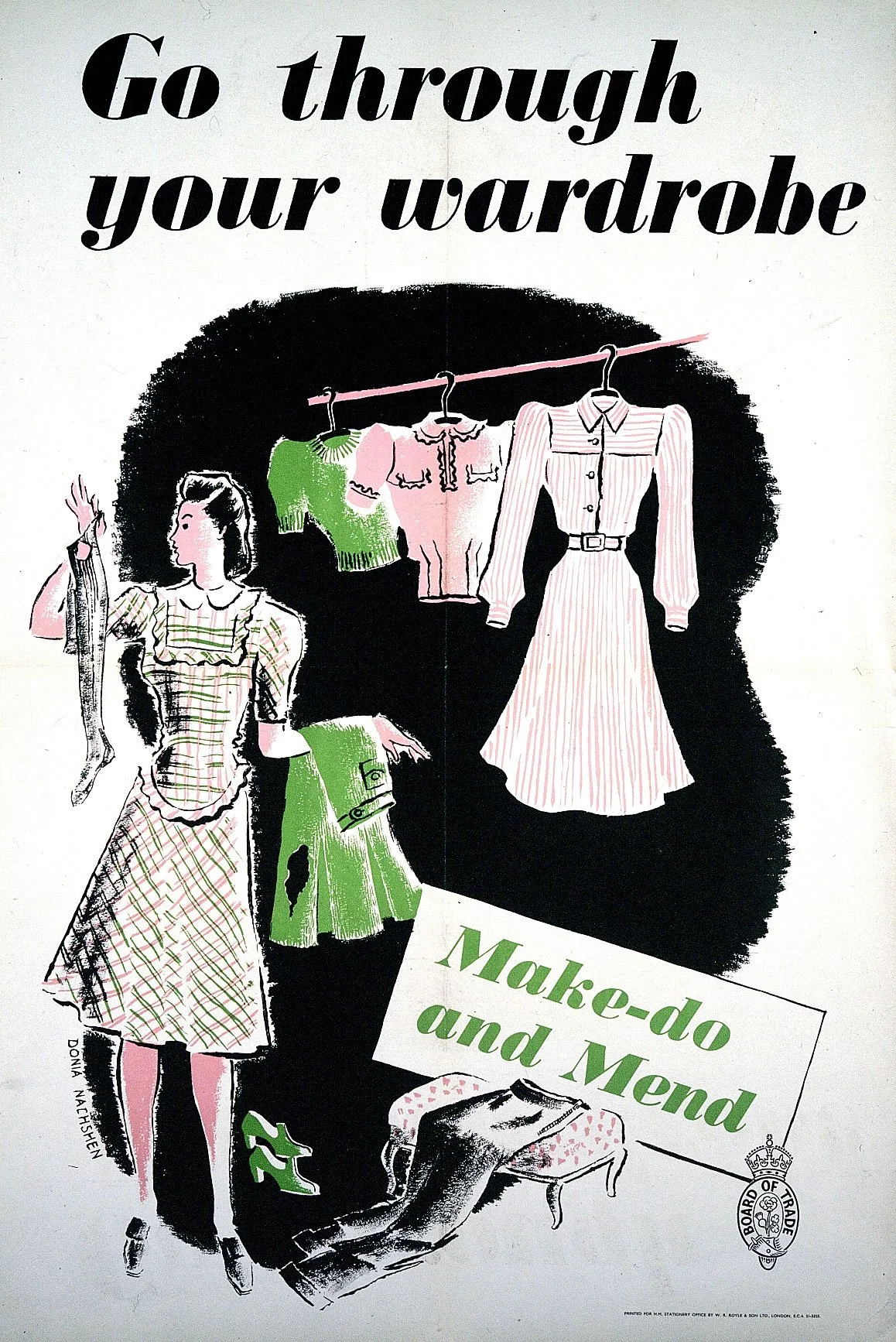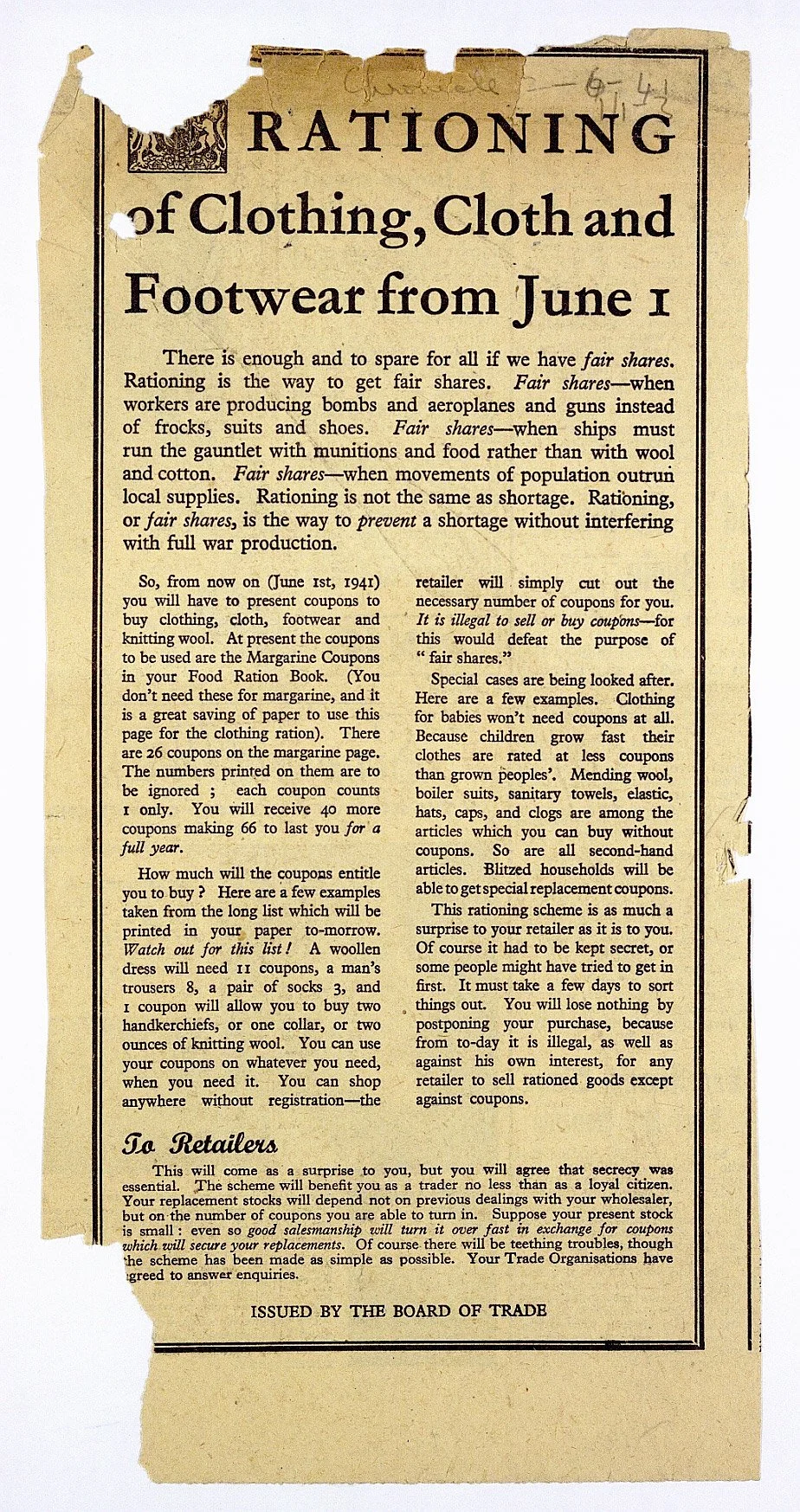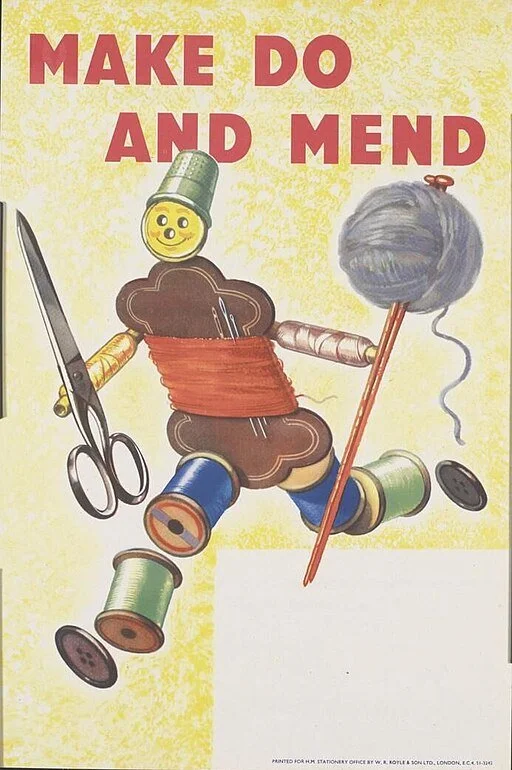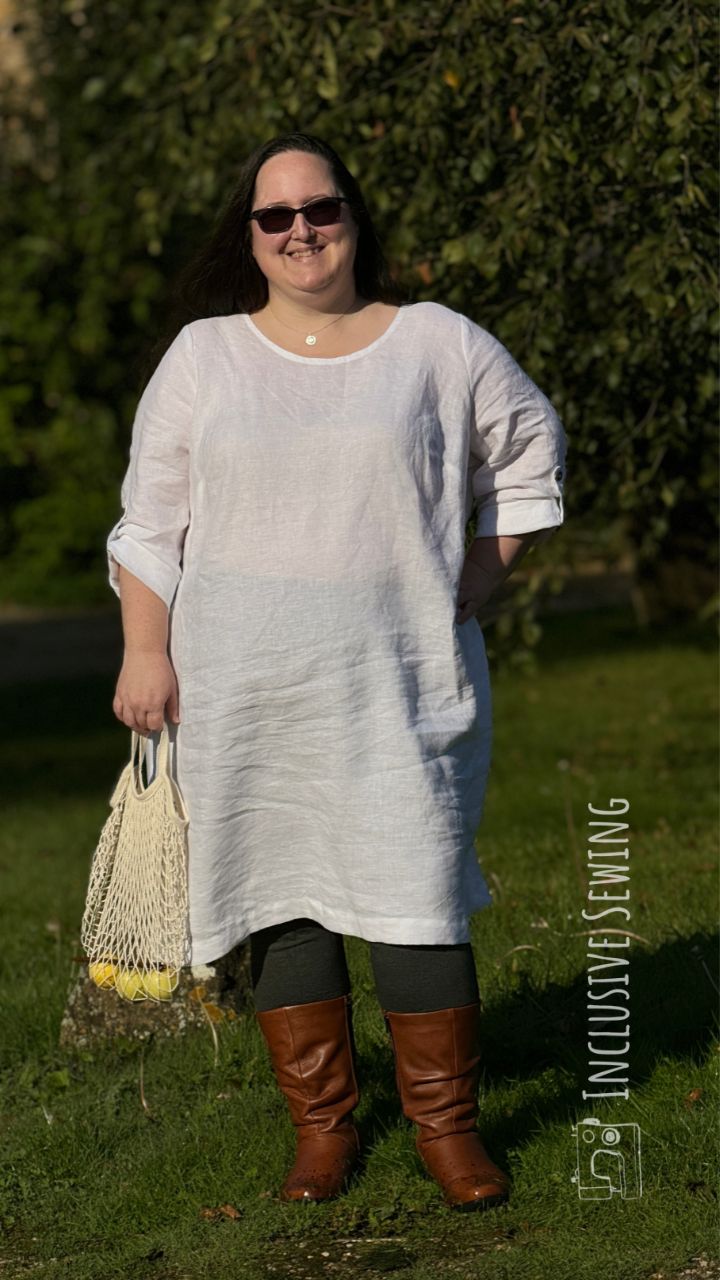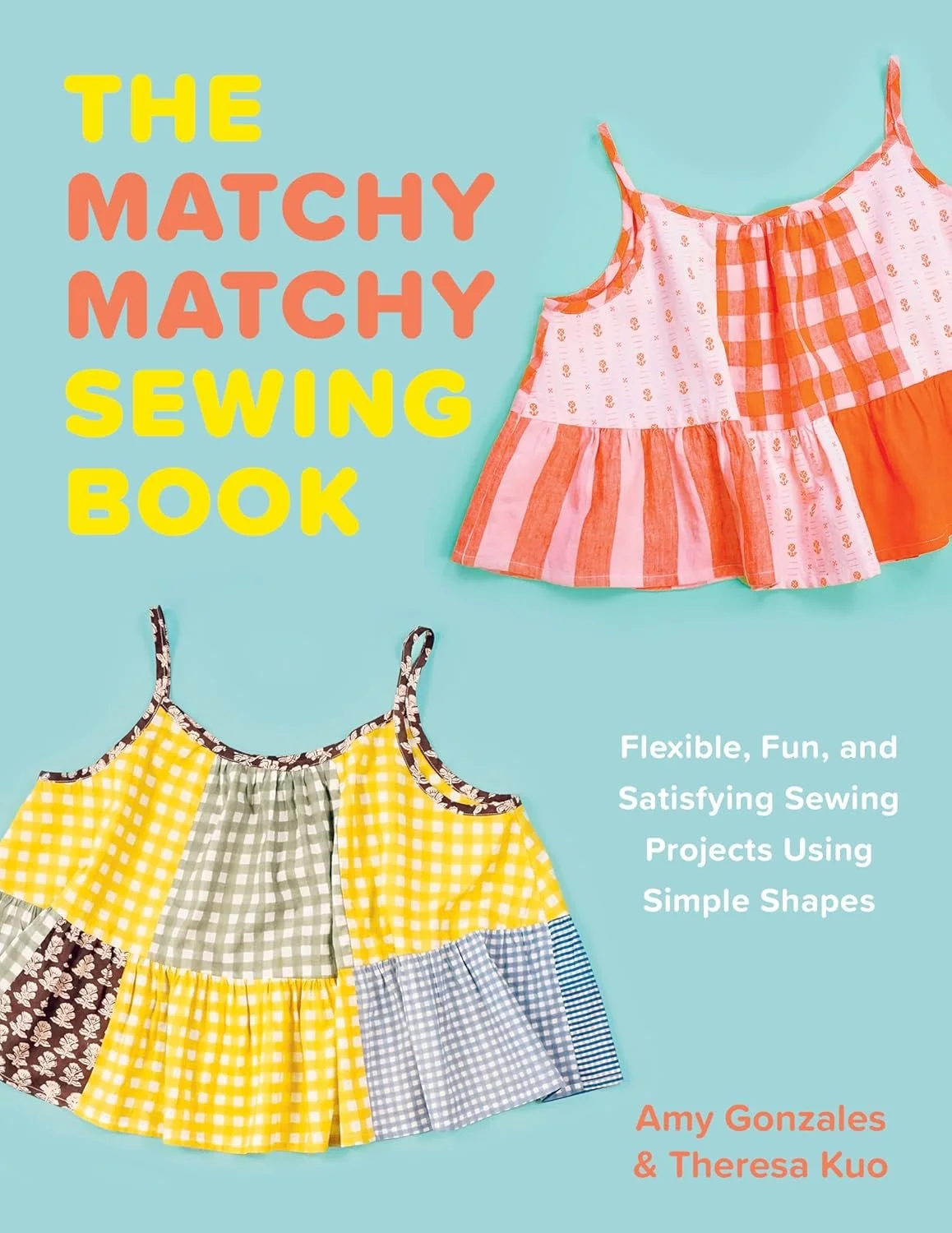Sustainable Sewing: Eco-Friendly Fashion for Every Body
Sustainable sewing invites us to slow down, sew with intention, and make clothing that reflects our values as well as our personal style. It’s about choosing sustainable fabrics, rescuing quality textiles from waste, and enjoying the creative freedom of designing garments that are truly our own as we create a more sustainable future. There’s a touch of nostalgia too — a nod to times when frugality meant resourcefulness, not limitation, and when mending and making were everyday acts of care. In episode 3 of season 11 of the Great British Sewing Bee, the made-to-measure challenge drew inspiration from Britain’s wartime Make Do and Mend campaign, a reminder that sewing can be both mindful and expressive, treading lightly on the earth while celebrating our individuality.
In this post, I’ll share resources for sustainable sewing including where to find eco-friendly fabrics and size-inclusive pattern ideas from Twig + Tale and Matchy Matchy Sewing Club. Along with practical tips for slow fashion sewing that work for every body.
Then and Now: From Make Do and Mend to Sustainable Sewing Practices
Britain’s Make Do and Mend campaign, launched in 1942 during the Second World War, encouraged households to repair, repurpose, and reuse old clothes in response to rationing and shortages. The goal was clear: extend the life of every garment and minimise textile waste at a time when resources were scarce.
Mindful Modern Makers
Eighty years later, the reasons driving more mindful consumption have changed, but the principle remains the same; build sustainable practices, reduce our carbon footprint and make an impact on over-consumption in our own small way. Fabric isn’t rationed today, but high-quality fabrics are harder to find and often priced out of reach, particularly for beginner sewists. Fast fashion has flooded the market with low-quality garments designed for short lifespans, making it all the more important to turn to slow fashion sewing — creating clothes with care, from materials that are built to last.
For many makers, that means harvesting fabric from vintage homewares such as old sheets, using deadstock that would otherwise be headed to landfill, or sewing with natural fibres like organic cotton and linen that are free from harmful chemicals. These approaches reduce environmental impact while offering the kind of quality and durability that’s increasingly rare in new mass-produced clothing.
Where to Find Sustainable Fabrics
The most sustainable fabric is the fabric you already own, and your old sheets, home decor, work shirt, and denim jackets could be the source of fabric for your next sewing project. With a little creativity and imagination, there are many old garments and functional items around the house that can be used in a creative way to make new clothes. But not everyone has a fabric stash, especially not when you're starting out, so where do you look for good quality sustainable fabric to buy?
There good news is that there are places to look in every region. (And if you know of any more, message me on Instagram and tell me about them so I can add them here.)
United Kingdom
Scrapstores – Community reuse centres selling fabric offcuts, remnants, and haberdashery at low cost. Many welcome public members. Examples: Children’s Scrapstore (Bristol), Wandsworth Scrapstore (London), Southampton Scrapstore. A full directory is at Reuseful UK.
Oxfam Superstore (Oxford) – Includes a dedicated textiles section with fabric yardage, vintage linens, and haberdashery.
Rainbow Fabrics – London-based, online store specialising in deadstock from high-street and designer brands.
AmoThreads – Online retailer offering 100% deadstock fabrics.
Minerva – Wide range of fabrics with a deadstock search filter. Shop Minerva Deadstock here.
United States
Goodwill – Many branches have household textiles and vintage linens suitable for garment sewing.
Creative Reuse Centres – The US equivalent of scrapstores, such as SCRAP Creative Reuse (Portland, San Francisco, Baltimore), Pittsburgh Center for Creative Reuse, and Austin Creative Reuse. Full listings at scrapcreativereuse.org and reuseinternational.org.
Queen of Raw – Online marketplace for deadstock fabrics from around the world.
Australia & New Zealand
Op Shops – Salvos, Vinnies, and other charity shops often have fabric yardage, curtains, and linens.
Resource Centres – Examples include Reverse Garbage (Sydney, Brisbane) and The ReMakery (Wellington).
Deadstock Retailers – New Zealand–based The Fabric Store carries occasional deadstock alongside new fabrics.
Spotlight on: Twig + Tale
Who they are. Twig + Tale is a New Zealand pattern house rooted in sustainability, inclusivity and skill-building, with a nature-inspired, storybook aesthetic that lends itself to slow fashion sewing using natural fibers. Their ethos is clear from the moment you land on their site — and it runs through their entire pattern range.
What makes them different. Every Twig + Tale pattern includes an upcycling guide with suggestions for reclaimed materials suitable for that specific project — rare in the pattern world and invaluable when working with sustainable materials instead of fresh yardage. They also share practical posts on repurposing, piecing, and eco-friendly options for technical makes.
Inclusive sizing.
Curved Fit: US 0–38 (up to 65" chest, 72" hip)
Straight Fit: sizes 30–66 (up to 66" chest and hip)
Fit labels are based on body shape rather than gender. Curved fit patterns are drafted for a height of 5’5”, and straight fit patterns drafted for 5’10”. Youth sizes for both fits span the gap between child and adult sizes and are drafted for 4’9”-5’5”.
Fitting resources. Twig + Tale tutorials cover a wide range of fitting adjustments, including FBAs/SBAs, fuller abdomen adjustments, upper-arm adjustments, forward shoulder alterations, and adaptive sewing (including post-mastectomy guidance). This makes their patterns adaptable for many bodies, even when working with irregular fabric pieces.
Style. Romantic-practical: clean lines you can embellish, lengthen, or piece. Their sustainable values and creative practice focus on intention and joy, not speed.
Example make. I tested the Plains Dress with the Tabbed Sleeves from their Sprig Sleeve Expansion Pack, using reclaimed linen. It’s an ideal style for deadstock or pieced fabrics, and the add-ons offer further versatility.
Sewing with Reclaimed Fabrics: My Twig + Tale Plains Dress
I tested Twig + Tale’s Plains Dress with the Tabbed Sleeves from their Sprig Sleeve Expansion Pack, using deadstock linen. This style is ideal for sustainable sewing — the clean lines make it easy to piece from smaller fabric sections, and the design works beautifully in both solid and patterned sustainable fabrics.
Matchy Matchy Sewing Club: Modern, Scrap-Friendly Design
Who they are. Matchy Matchy Sewing Club is run by Amy and Theresa, self-taught sewists with a love of simple, modern design and a playful, wearable aesthetic. Their motto — “mix it, match it, make it your own” — comes through in every pattern.
Why they’re great for reclaimed fabrics. Many of their patterns are intentionally scrap- and patchwork-friendly, making them perfect for piecing smaller sections of reclaimed fabric into stylish garments. The Collage Gather Top, for example, is drafted for patchwork projects or single-cloth layouts, with two sleeve options and a slightly cropped boxy silhouette.
Inclusive sizing. XXS–6XL, typically covering bust 31"–64" (79–162 cm), consistent across their catalogue.
Patterns to know:
Collage Gather Top — Patchwork-friendly, quick sew, ideal for mixing prints.
Horizon Day Dress — Adjustable lengths, easy to hack, works with pieced panels.
Skipper Top & Dress — Simple shapes, great for colour-blocking deadstock.
Homebody Quilted Jacket — Scrap-quilt aesthetic, perfect for visible mending or reclaimed fabric use.
Free Pattern & Tutorials — Great for using small fabric scraps before committing to a garment.
Further Reading and Resources
Pattern Designers
Twig + Tale – Size-inclusive, eco-conscious patterns with dedicated upcycling and fabric sourcing guides. Up to 72” hip.
Matchy Matchy Sewing Club – Modern, scrap-friendly designs up to 64” hip.
Books
The Great British Sewing Bee: Sustainable Style – A companion to the GBSB Series 6, with patterns for men’s and women’s garments. Sizing is not very inclusive (UK22), but there are still lots of tips and tutorials making it a worthwhile purchase.
The Matchy Matchy Sewing Book - Flexible, Fun, and Satisfying Sewing Projects Using Simple Shapes - available to pre-order from indie booksellers in the UK and USA.
Fabric Sources
Minerva – Search the deadstock filter for sustainable fabric options.
Rainbow Fabrics – London-based deadstock specialist.
AmoThreads – 100% deadstock fabric retailer.
Reuseful UK Scrapstore Directory – Find a scrapstore near you.
SCRAP Creative Reuse – US-based reuse centres.
Reverse Garbage – Fabric and material reuse in Sydney and Brisbane.
On the Blog
Share Your Sustainable Sewing
I’d love to see what you make with reclaimed fabrics, deadstock finds, or patterns from Twig + Tale and Matchy Matchy Sewing Club. If you post your project on Instagram, tag me @inclusivesewing so I can see it (use the hashtag as well if you like) — I’ll share and repost selected makes on my social media to inspire others in the sewing community.

